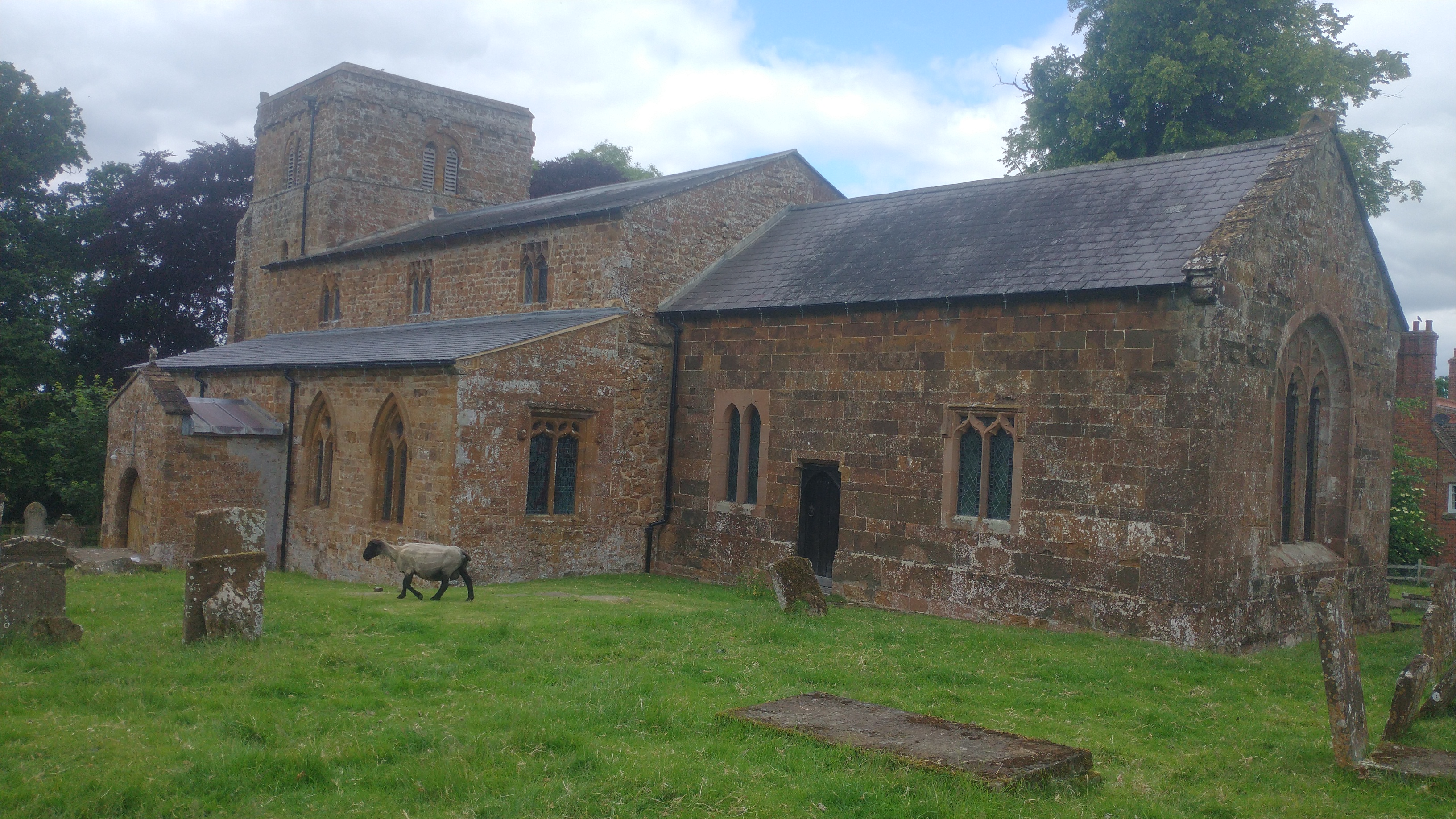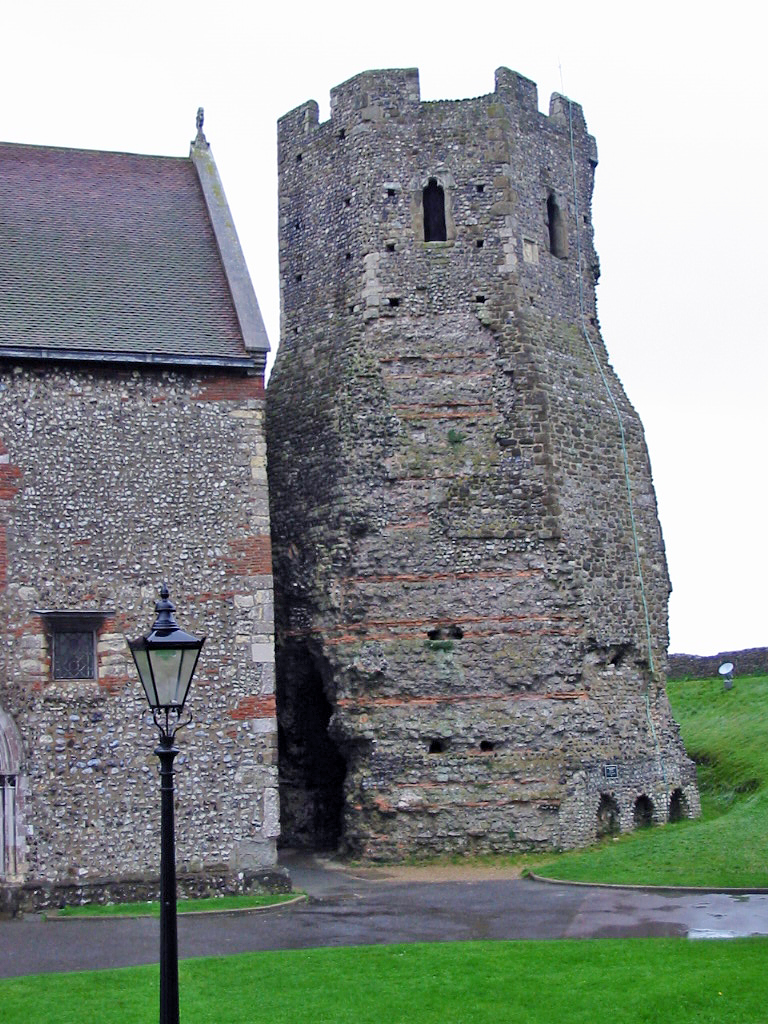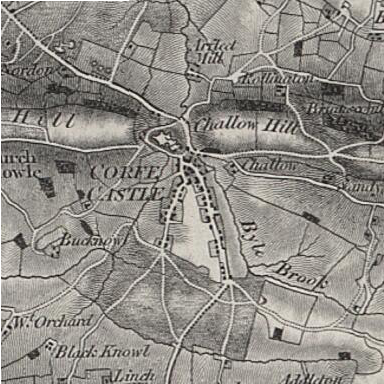|
John Peche
Sir John Peche (sometimes spelt Pecche) (c. 1285 in Wormleighton, Warwickshire, England – before 1335 in Honiley, Warwickshire, England) was Lord Warden of the Cinque Ports from 1323 to 1324. He died about 1335.Complete Peerage 10 (1945): 342–343 (sub Pecche) Sir John Peche was the son and heir of Richard Peche and Hawisia de Arden, and a great-grandson of Robert Peche. He was in the king's service in Scotland almost continuously from January 1297/8 till 1304. He served in various capacities in County Warwick from 1317 to 1321. He was summoned to Parliament from 15 May 1321 to 22 January 1335/6, by writs directed Johanni Pecche, whereby he is said to have become Lord Pecche. He was appointed keeper of the town and castle of Warwick, in 1321, and later was ordered to raise forces in County Warwick and lend them to the king. He kept the castle until July 1326. He fought at the Battle of Boroughbridge 16 March 1321/2, as a banneret, on the king's side. He was summoned for servi ... [...More Info...] [...Related Items...] OR: [Wikipedia] [Google] [Baidu] |
Wormleighton
Wormleighton is a village in Warwickshire on top of Wormleighton Hill overlooking the River Cherwell, England. The population taken at the 2011 census was 183. The original village was by the banks of the Cherwell and can still be seen as a series of humps and hollows on the East bank of the Oxford Canal. The present village sits on the crest of the hill. At one end is St Peter's Church, which has a Norman tower and nave, made of local ironstone, with small added Gothic aisles. It has an graveyard around it, accessible to local sheep, and hints of a circular enclosure. A path from the church takes the visitor directly to the remains of the old 16th-century Manor house, of which the first view is a fine old chimney, then the great hall can be seen, part made of stone, part of brick. The gatehouse is Jacobean, and has a date of 1613 upon it. The manor house was slighted by the Parliamentarians as it was a Royalist stronghold. The village was abandoned after the English ... [...More Info...] [...Related Items...] OR: [Wikipedia] [Google] [Baidu] |
Dover Castle
Dover Castle is a medieval castle in Dover, Kent, England and is Grade I listed. It was founded in the 11th century and has been described as the "Key to England" due to its defensive significance throughout history. Some sources say it is the largest castle in England, a title also claimed by Windsor Castle. History Iron age This site may have been fortified with earthworks in the Iron Age or earlier, before the Romans invaded in AD 43. This is suggested on the basis of the unusual pattern of the earthworks which does not seem to be a perfect fit for the medieval castle. Excavations have provided evidence of Iron Age occupation within the locality of the castle, but it is not certain whether this is associated with the hillfort. Roman era The site also contains one of Dover's two Roman lighthouses (or pharoses), one of only three surviving Roman-era lighthouses in the world, and the tallest and most complete standing Roman structure in England. It is also claimed to be B ... [...More Info...] [...Related Items...] OR: [Wikipedia] [Google] [Baidu] |
Year Of Birth Unknown
A year or annus is the orbital period of a planetary body, for example, the Earth, moving in its orbit around the Sun. Due to the Earth's axial tilt, the course of a year sees the passing of the seasons, marked by change in weather, the hours of daylight, and, consequently, vegetation and soil fertility. In temperate and subpolar regions around the planet, four seasons are generally recognized: spring, summer, autumn and winter. In tropical and subtropical regions, several geographical sectors do not present defined seasons; but in the seasonal tropics, the annual wet and dry seasons are recognized and tracked. A calendar year is an approximation of the number of days of the Earth's orbital period, as counted in a given calendar. The Gregorian calendar, or modern calendar, presents its calendar year to be either a common year of 365 days or a leap year of 366 days, as do the Julian calendars. For the Gregorian calendar, the average length of the calendar year ( ... [...More Info...] [...Related Items...] OR: [Wikipedia] [Google] [Baidu] |
Lords Warden Of The Cinque Ports
The Lord Warden of the Cinque Ports is a ceremonial official in the United Kingdom. The post dates from at least the 12th century, when the title was Keeper of the Coast, but may be older. The Lord Warden was originally in charge of the Cinque Ports, a group of five (''cinque'' in Norman French) port towns on the southeast coast of England that was formed to collectively supply ships for The Crown in the absence at the time of a formal navy. Today the role is a sinecure and an honorary title, and fourteen towns belong to the Cinque Ports confederation. The title is one of the higher honours bestowed by the Sovereign; it has often been held by members of the Royal Family or prime ministers, especially those who have been influential in defending Britain at times of war. The Lord Warden was solely responsible for the return of all writs to the Crown, along with the collection of taxes and the arrest of criminals. His court was held in St James's church, near Dover Castle, and th ... [...More Info...] [...Related Items...] OR: [Wikipedia] [Google] [Baidu] |
1330s Deaths
{{numberdis ...
133 may refer to: *133 (number) *AD 133 *133 BC *133 (song) *133 (New Jersey bus) 133 may refer to: *133 (number) * AD 133 *133 BC *133 (song) 133 may refer to: *133 (number) *AD 133 *133 BC *133 (song) *133 (New Jersey bus) 133 may refer to: *133 (number) *AD 133 Year 133 ( CXXXIII) was a common year starting on Wednesd ... [...More Info...] [...Related Items...] OR: [Wikipedia] [Google] [Baidu] |
Ralph Basset, 3rd Baron Basset De Drayton
Ralph (pronounced ; or ,) is a male given name of English, Scottish and Irish origin, derived from the Old English ''Rædwulf'' and Radulf, cognate with the Old Norse ''Raðulfr'' (''rað'' "counsel" and ''ulfr'' "wolf"). The most common forms are: * Ralph, the common variant form in English, which takes either of the given pronunciations. * Rafe, variant form which is less common; this spelling is always pronounced , as are all other English spellings without "l". * Raife, a very rare variant. * Raif, a very rare variant. Raif Rackstraw from H.M.S. Pinafore * Ralf, the traditional variant form in Dutch, German, Swedish, and Polish. * Ralfs, the traditional variant form in Latvian. * Raoul, the traditional variant form in French. * Raúl, the traditional variant form in Spanish. * Raul, the traditional variant form in Portuguese and Italian. * Raül, the traditional variant form in Catalan. * Rádhulbh, the traditional variant form in Irish. Given name Middle Ages * Ralph ... [...More Info...] [...Related Items...] OR: [Wikipedia] [Google] [Baidu] |
Edmund Of Woodstock, 1st Earl Of Kent
Edmund of Woodstock, 1st Earl of Kent (5 August 130119 March 1330), whose seat was Arundel Castle in Sussex, was the sixth son of King Edward I of England, and the second by his second wife Margaret of France, and was a younger half-brother of King Edward II. Edward I had intended to make substantial grants of land to Edmund, but when the king died in 1307, Edward II refused to respect his father's intentions, mainly due to his favouritism towards Piers Gaveston. Edmund remained loyal to his brother, and in 1321 he was created Earl of Kent. He played an important part in Edward's administration as diplomat and military commander and in 1321–22 helped suppress a rebellion. Discontent against the King grew and eventually affected Edmund. The discontent was largely caused by Edward's preference for his new favourites, Hugh Despenser the Younger and his father. In 1326, Edmund joined a rebellion led by Queen Isabella and Roger Mortimer, whereby King Edward II was deposed. E ... [...More Info...] [...Related Items...] OR: [Wikipedia] [Google] [Baidu] |
Corfe Castle
Corfe Castle is a fortification standing above the village of the same name on the Isle of Purbeck peninsula in the English county of Dorset. Built by William the Conqueror, the castle dates to the 11th century and commands a gap in the Purbeck Hills on the route between Wareham and Swanage. The first phase was one of the earliest castles in England to be built at least partly using stone when the majority were built with earth and timber. Corfe Castle underwent major structural changes in the 12th and 13th centuries. In 1572, Corfe Castle left the Crown's control when Elizabeth I sold it to Sir Christopher Hatton. Sir John Bankes bought the castle in 1635, and was the owner during the English Civil War. While Bankes was fighting in London and Oxford, his wife, Lady Mary Bankes, led the defence of the castle when it was twice besieged by Parliamentarian forces. The first siege, in 1643, was unsuccessful, but by 1645 Corfe was one of the last remaining royalist ... [...More Info...] [...Related Items...] OR: [Wikipedia] [Google] [Baidu] |
Cinque Ports
The Confederation of Cinque Ports () is a historic group of coastal towns in south-east England – predominantly in Kent and Sussex, with one outlier (Brightlingsea) in Essex. The name is Old French, meaning "five harbours", and alludes to the original five members (Hastings, New Romney, Hythe, Dover and Sandwich). At its peak in the late middle ages, the confederation included over 40 members. The confederation was originally formed for military and trade purposes, but is now entirely ceremonial. The ports lie on the western shore of the English Channel, where the crossing to the European continent is narrowest. Origins The origins of the confederation are obscure, but are believed to lie in the late Anglo-Saxon period, and specifically in the reign of Edward the Confessor (1042–1066). Certain south-east ports were granted the local profits of justice in return for providing ships. The ship service of Romney, Dover and Sandwich (but not the confederation itself) is note ... [...More Info...] [...Related Items...] OR: [Wikipedia] [Google] [Baidu] |
Gascony
Gascony (; french: Gascogne ; oc, Gasconha ; eu, Gaskoinia) was a province of the southwestern Kingdom of France that succeeded the Duchy of Gascony (602–1453). From the 17th century until the French Revolution (1789–1799), it was part of the combined Province of Guyenne and Gascony. The region is vaguely defined, and the distinction between Guyenne and Gascony is unclear; by some they are seen to overlap, while others consider Gascony a part of Guyenne. Most definitions put Gascony east and south of Bordeaux. It is currently divided between the region of Nouvelle-Aquitaine (departments of Landes, Pyrénées-Atlantiques, southwestern Gironde, and southern Lot-et-Garonne) and the region of Occitanie (departments of Gers, Hautes-Pyrénées, southwestern Tarn-et-Garonne, and western Haute-Garonne). Gascony was historically inhabited by Basque-related people who appear to have spoken a language similar to Basque. The name Gascony comes from the same root as the word Basq ... [...More Info...] [...Related Items...] OR: [Wikipedia] [Google] [Baidu] |
Warwickshire
Warwickshire (; abbreviated Warks) is a county in the West Midlands region of England. The county town is Warwick, and the largest town is Nuneaton. The county is famous for being the birthplace of William Shakespeare at Stratford-upon-Avon and Victorian novelist George Eliot, (born Mary Ann Evans), at Nuneaton. Other significant towns include Rugby, Leamington Spa, Bedworth, Kenilworth and Atherstone. The county offers a mix of historic towns and large rural areas. It is a popular destination for international and domestic tourists to explore both medieval and more recent history. The county is divided into five districts of North Warwickshire, Nuneaton and Bedworth, Rugby, Warwick and Stratford-on-Avon. The current county boundaries were set in 1974 by the Local Government Act 1972. The historic county boundaries included Coventry, Sutton Coldfield and Solihull, as well as much of Birmingham and Tamworth. Geography Warwickshire is bordered by Leicestershire to the nort ... [...More Info...] [...Related Items...] OR: [Wikipedia] [Google] [Baidu] |
Battle Of Boroughbridge
The Battle of Boroughbridge was fought on 16 March 1322 in England between a group of rebellious barons and the forces of King Edward II, near Boroughbridge, north-west of York. The culmination of a long period of antagonism between the King and Thomas, Earl of Lancaster, his most powerful subject, it resulted in Lancaster's defeat and execution. This allowed Edward to re-establish royal authority and hold on to power for almost five more years. Though not a part of the Wars of Scottish Independence, the battle is significant for its employment of tactics learned in the Scottish wars in a domestic, English conflict. Both the extensive use of foot soldiers rather than cavalry and the heavy impact caused by the longbow represented significant steps in military developments. Background Edward II was a weak and ineffectual king (made to look the more so by comparison with his father and son, Edward I and Edward III), and his reign was marked by military failure and internal strife ... [...More Info...] [...Related Items...] OR: [Wikipedia] [Google] [Baidu] |





